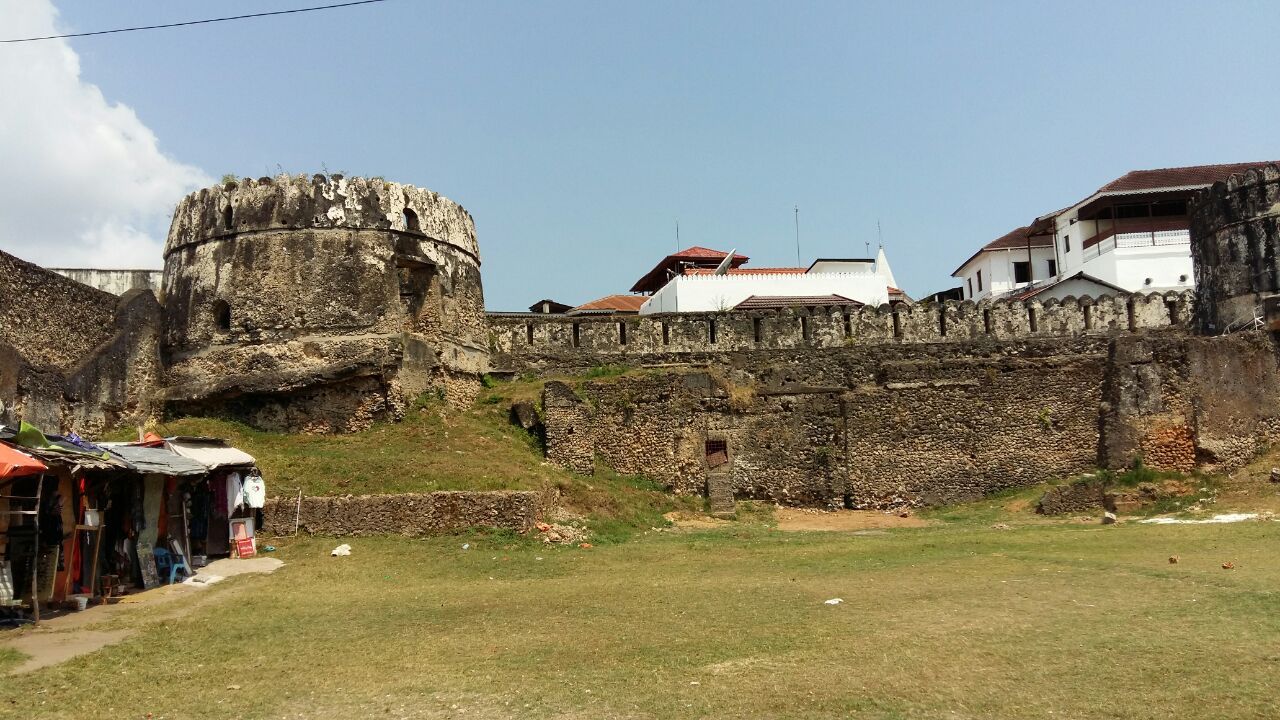A student tour of Zanzibar Stone Town offers a rich tapestry of history, culture, and architecture. Here are key areas to visit and what students will learn from each:
1. The Old Fort (Ngome Kongwe):
- What to See: Imposing stone walls, remnants of former structures, an open-air amphitheater, and often local artisan stalls.
- What Students Will Learn:
- History: Understanding Stone Town's early defensive structures and the Omani Arab influence. They can learn about the fort's construction, its various uses over time (prison, barracks, etc.), and its significance in the context of Zanzibar's past conflicts and power dynamics.
- Architecture: Observing the early building techniques and materials used in Stone Town's construction.
- Culture: Experiencing the vibrant atmosphere and potentially interacting with local artisans, gaining insight into contemporary Zanzibari crafts.
2. The House of Wonders (Beit-al-Ajaib):
- What to See: A grand, iconic building with balconies and historical artifacts (though currently undergoing renovation, the exterior is still impressive).
- What Students Will Learn:
- History: Learning about the reign of Sultan Barghash and the introduction of modern amenities to Zanzibar (electricity, piped water, the first elevator in East Africa). This showcases Zanzibar's early adoption of technology.
- Architecture: Studying the unique blend of architectural styles – Omani, European, and Zanzibari – evident in its design.
- Culture: Understanding the opulence and lifestyle of the former Sultans and their role in Zanzibar's development.
3. The Forodhani Gardens:
- What to See: A bustling public square along the waterfront, especially lively in the evenings with food stalls.
- What Students Will Learn:
- Culture: Experiencing the vibrant street food culture of Zanzibar, sampling local delicacies, and observing social interactions among locals and tourists.
- Economics: Understanding the informal economy and the role of small-scale vendors in the local community.
- Social Studies: Observing how public spaces are used for leisure and social gatherings.
- History: Learning about the historical significance of the waterfront as a port and trading hub.
4. The Old Slave Market Site (including the Anglican Cathedral):
- What to See: The site where the slave market once stood, marked by a poignant memorial and the Anglican Cathedral built on the site after the abolition of the slave trade. Underground chambers where slaves were held can sometimes be visited.
- What Students Will Learn:
- History: Gaining a profound understanding of the horrific realities of the East African slave trade, its organization, and its devastating impact on the region. The memorial and the cathedral's history serve as powerful symbols of the struggle against slavery.
- Ethics and Human Rights: Reflecting on the moral implications of slavery and the importance of human rights and dignity.
- Social Justice: Learning about the abolitionist movement and the individuals who fought against slavery.
- Religion: Understanding the role of the Anglican Church in the abolition movement and its historical presence in Zanzibar.
5. The Spice Farms (Outside Stone Town, but a common excursion):
- What to See: Lush plantations growing a variety of spices like cloves, nutmeg, cinnamon, pepper, vanilla, and exotic fruits.
- What Students Will Learn:
- Botany and Agriculture: Identifying different spice plants, understanding their cultivation, and learning about their economic and medicinal uses.
- History: Understanding the historical significance of the spice trade in Zanzibar's development and its global connections.
- Economics: Learning about the agricultural industry in Zanzibar and the importance of spices as a cash crop.
- Culture: Experiencing the sensory aspects of spices and their role in Zanzibari cuisine and traditions.
6. The Narrow Streets and Alleyways:
- What to See: A labyrinthine network of narrow pedestrian streets with intricately carved wooden doors and balconies.
- What Students Will Learn:
- Architecture: Observing the unique architectural style of Stone Town, influenced by Arab, Indian, and African traditions. Studying the intricate details of the doors, balconies, and building materials.
- Urban Planning: Understanding the historical development of the town and how its layout reflects its past as a trading center.
- Culture: Experiencing the everyday life of the residents, observing local interactions, and appreciating the blend of cultures that permeates the town.
7. The Palace Museum (Beit el-Sahel):
- What to See: The former residence of the Sultans, now a museum showcasing the history and lifestyle of the Zanzibari royalty.
- What Students Will Learn:
- History: Gaining further insights into the lives of the Sultans, their political influence, and the history of the ruling families.
- Culture: Observing the artifacts, furniture, and clothing of the royal family, providing a glimpse into their customs and traditions.
- Architecture: Studying the palace's design and its evolution over time.
8. The Freddie Mercury Museum:
- What to See: A small museum dedicated to the birthplace and early life of the legendary Queen frontman, Freddie Mercury (Farrokh Bulsara), who was born in Stone Town.
- What Students Will Learn:
- History: Learning about a significant figure with Zanzibari roots who achieved global fame in music.
- Culture: Understanding the diverse backgrounds and influences that have shaped Zanzibar's cultural landscape.
- Arts and Music: Potentially inspiring students interested in music and the arts.
Educational Focus:
Throughout the tour, educators should encourage students to:
- Observe carefully: Pay attention to architectural details, historical markers, and local interactions.
- Ask questions: Engage with guides and locals to deepen their understanding.
- Make connections: Relate what they see to their classroom learning in history, geography, culture, and social studies.
- Reflect critically: Think about the historical significance and the lasting impact of the events and cultures that shaped Stone Town.
A well-planned educational tour of Zanzibar Stone Town can provide a multi-sensory and deeply engaging learning experience, bringing history and culture to life for students. Remember to hire knowledgeable local guides who can provide context and answer student inquiries effectively.


No comments
Post a Comment